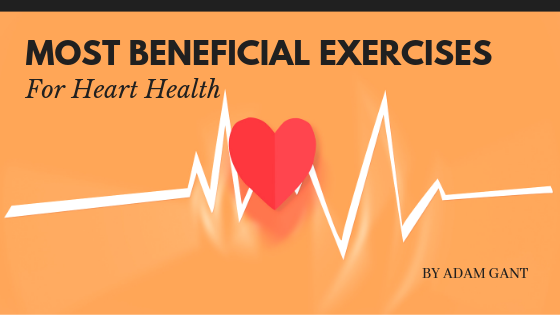It is recommended that fitness routines include a variety of exercise types. Only doing aerobic exercise 7 days a week with no flexibility or resistance training is counter-productive to heart health. It is important to have a balance for maximum benefit.
Let’s explore the different types of beneficial exercises that can contribute to a healthy heart.
Strength and Resistance Training
Strength and resistance exercises target muscle mass and bone formation. Lean muscles help to reduce excess body fat that can lead to unhealthy cholesterol levels. Strong bones, supported by healthy muscles, are necessary to prevent osteoporosis. Strong bones and lean muscles are essential for preventing injuries.
Types of strength and resistance exercises include lifting free weights, squats, sit-ups, and push-ups. Exercise routines that specifically support the core include Pilates and Barre Method workouts. While swimming may be an aerobic exercise, it is also an excellent resistance workout because you have the water to support you and limit stress on your bones. Working to improve your bone and muscle strength can help keep your heart health as it doesn’t need to work quite as hard.
Stretching and Flexibility Exercise
Stretching and flexibility workouts are beneficial for musculoskeletal health so that you can keep moving. If you are not flexible enough to move, your heart muscle is going to suffer. Being flexible can also keep you free of aching joints and muscle cramps.
Stretching and flexibility exercises are considered low impact movements that do not promote bone breaks or muscle tears. Workouts include yoga, tai-chi, ball and band work, and Qi-Gong.
Aerobic and Cardio Exercise
If your health care provider has cleared you for strenuous exercise, aerobic exercise is the gold standard for supporting heart health. It improves blood circulation that helps prevent plaque build-up in the arteries and brings more oxygen to muscles and organs. Oxygen is necessary to survive and is also required to heal injuries that cause inflammation.
Cardio workouts, as the name implies, aim to increase heart rate to pump more blood throughout the body. There is no need to overdo it to reap the rewards. It is imperative that a break is taken at least once a week from cardio exercise. A day of rest and recovery allows the body to heal and repair.
Aerobic and cardio exercises can be as gentle as walking 30 minutes a day or jumping on a rebounder for 15 minutes. Running, cycling, kickboxing, skiing, and Zumba classes will really get your heart pumping. It is always a good idea to wear a monitor so that you keep track of your heart rate which needs to be kept at a reasonable rate for your age and physical condition. As you cool down, it is important to watch for a decrease in heart rate, as well.
As always, check in with your health care professional before embarking on a new exercise regime to support heart health.

